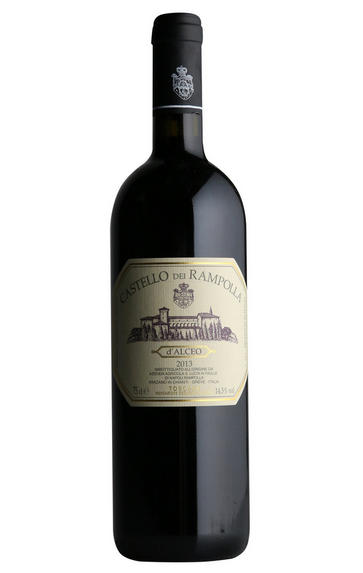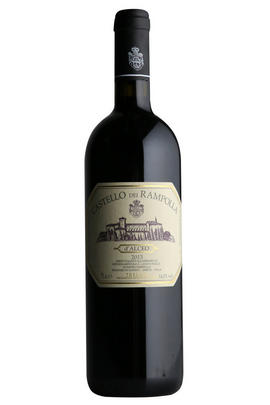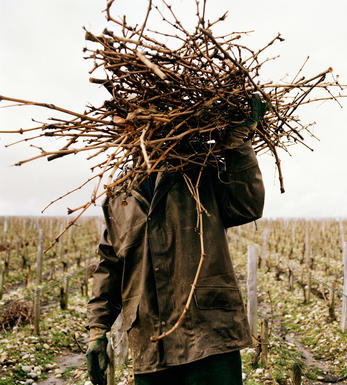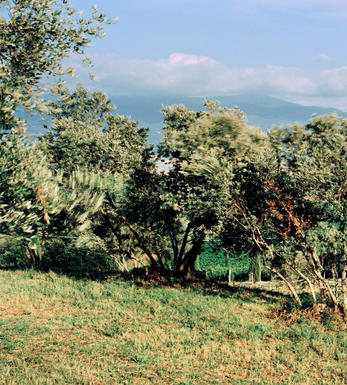
2011 d'Alceo, Castello dei Rampolla, Tuscany, Italy

Critics reviews
The 2011 d'Alceo is a stunning blend of 85% Cabernet Sauvignon with 15% Petit Verdot. The bouquet is perfumed and enticing with dark rose, cherry fruit, spice, leather, cola, grilled herb, and so much more. Fruit comes from a six-hectare single vineyard (whereas fruit for the Sammarco represents a unique selection from various vineyards.) The intensity and purity are what sets this wine apart. Both are impeccable. In the mouth, d'Alceo feels long, linear and meaningful. Castello dei Rampolla practices biodynamic farming.
Drink 2017-2030
Monica Larner, Wine Advocate (October 2015)
About this WINE

Castello dei Rampolla
Castello dei Rampolla’s pedigree and roots are firmly entrenched in the Super Tuscan category. The estate dates back to the 13th century and has remained in the hands of the Di Napoli family since 1739.
Inspired by the success of Sassicaia, Alceo Di Napoli made the decision to plant Cabernet Sauvignon and Sangiovese vines in 1965. In these early years, grapes were sold onto Piero Antinori, as he gathered the fruit for the first vintages of Tignanello. The first Castello dei Rampolla vintage was launched in 1980 to great success. In part, this was thanks to the watchful eye of Giacomo Tachis, an oenologist who had previously consulted on Sassicaia during its ascent to fame.
Production is tiny, spanning anywhere from 8,000 to 25,000 bottles a year dependent on the vintage. But, among those lucky enough to taste them, the Castello dei Rampolla wines have garnered an impressive reputation for their bold, nuanced style and propensity to age gracefully.
Winemaking at Castello dei Rampolla is minimalist, and current owner Luca Di Napoli made the move to biodynamic practices in 1994, three years after taking over from his father. Luca is also implementing a gentler oak regime, and has credited his wines’ jump in quality to this.

Tuscany
Responsible for only 6 percent of Italy's total wine production in 2006 (half that of the Veneto) Tuscany may not be a heavyweight in terms of quantity, but as the home of two of the country's most famous fine wines - Chianti and Brunello di Montalcino - it certainly holds its own in terms of quality.
Tuscany is Italy's most ancient wine region, dating back to the 8th century BC when the Etruscans developed the area in parallel with the Greeks, before ceding to the Romans. Along with building roads and sewers, they developed the region's viticultural potential, using wood for winemaking rather than amphorae, and passing their expertise onto their French neighbours. With the demise of Rome in the 5th century AD, the Longobards established Lucca as the capital of what was then known as Tuscia. Florence and Siena became banking and trading hubs during the Middle Ages, with Chianti – then a white wine – first documented in the 14th century.Tuscany passed from the Medicis to the Habsburgs as part of the Holy Roman Empire, and then onto the Austrian Empire before becoming part of a reunified Italy in 1861. The quality of Chianti was first recognised by the Grand Duke of Tuscany, Cosimo III, who classified its finest areas in 1716.
Located in the west-central part of the country with the Tyrrhenian Sea lapping its coastline, Tuscany's climate ranges from Mediterranean on the coast to continental deep in the Apennines. More than two thirds of the province is covered with hills, an important terroir factor in the production of fine Tuscan wine. The finest such areas are Chianti Classico, Chianti Rufina, Brunello di Montalcino, Vino Nobile di Montepulciano, Morellino di Scansano and Bolgheri. Sangiovese (in its various clones) is the black grape of choice.
Recommended producers: Valgiano, Caiarossa, Villa Calcinaia, Bibbiano, Badia a Coltibuono, La Serena, Scopetone, Lisini, Sesti, San Giuseppe, Cerbaiona.

Cabernet Sauvignon Blend
Cabernet Sauvignon lends itself particularly well in blends with Merlot. This is actually the archetypal Bordeaux blend, though in different proportions in the sub-regions and sometimes topped up with Cabernet Franc, Malbec, and Petit Verdot.
In the Médoc and Graves the percentage of Cabernet Sauvignon in the blend can range from 95% (Mouton-Rothschild) to as low as 40%. It is particularly suited to the dry, warm, free- draining, gravel-rich soils and is responsible for the redolent cassis characteristics as well as the depth of colour, tannic structure and pronounced acidity of Médoc wines. However 100% Cabernet Sauvignon wines can be slightly hollow-tasting in the middle palate and Merlot with its generous, fleshy fruit flavours acts as a perfect foil by filling in this cavity.
In St-Emilion and Pomerol, the blends are Merlot dominated as Cabernet Sauvignon can struggle to ripen there - when it is included, it adds structure and body to the wine. Sassicaia is the most famous Bordeaux blend in Italy and has spawned many imitations, whereby the blend is now firmly established in the New World and particularly in California and Australia.


Buying options
Add to wishlist
Description
The 2011 d'Alceo is a stunning blend of 85% Cabernet Sauvignon with 15% Petit Verdot. The bouquet is perfumed and enticing with dark rose, cherry fruit, spice, leather, cola, grilled herb, and so much more. Fruit comes from a six-hectare single vineyard (whereas fruit for the Sammarco represents a unique selection from various vineyards.) The intensity and purity are what sets this wine apart. Both are impeccable. In the mouth, d'Alceo feels long, linear and meaningful. Castello dei Rampolla practices biodynamic farming.
Drink 2017-2030
Monica Larner, Wine Advocate (October 2015)
wine at a glance
Delivery and quality guarantee